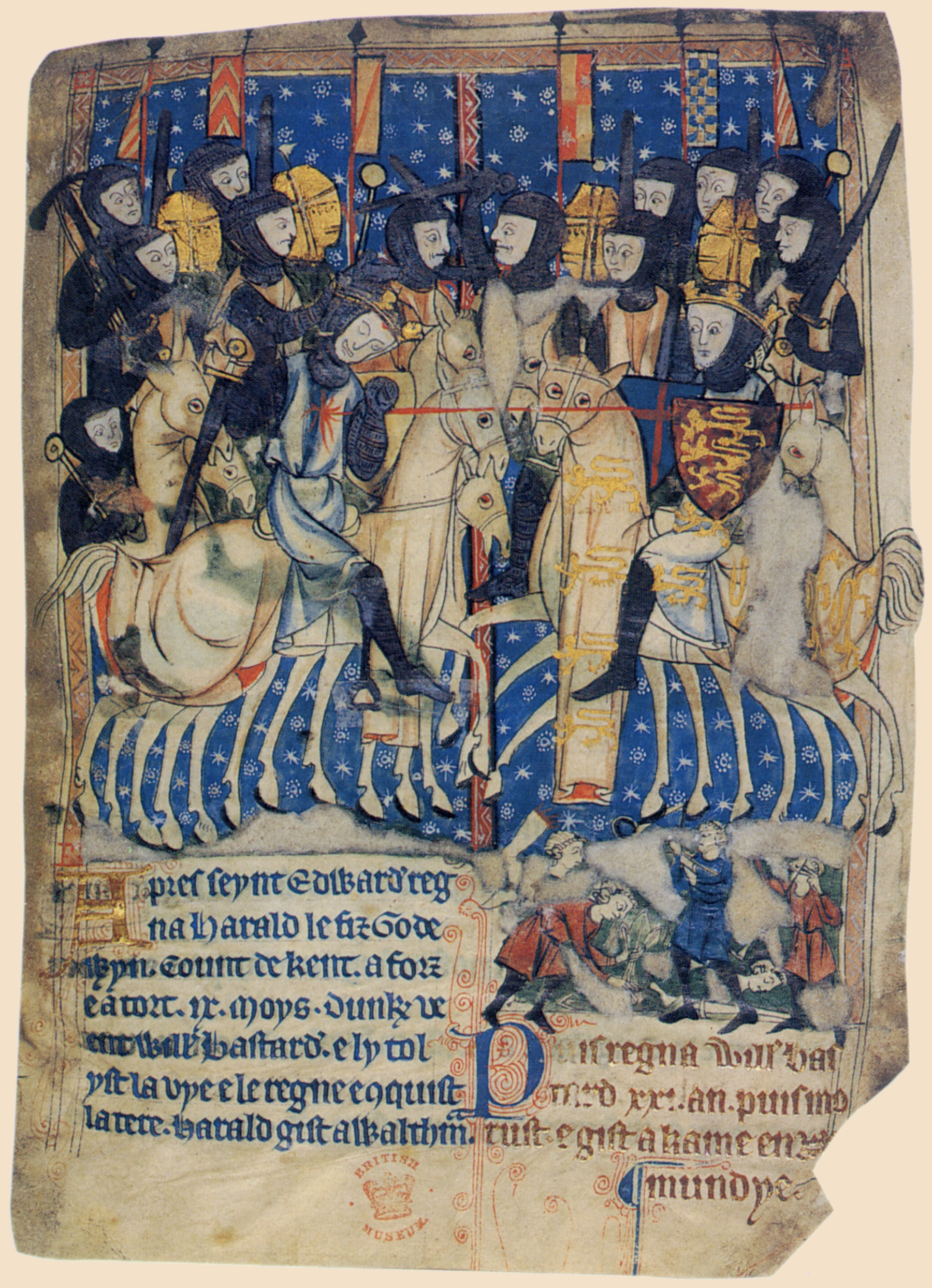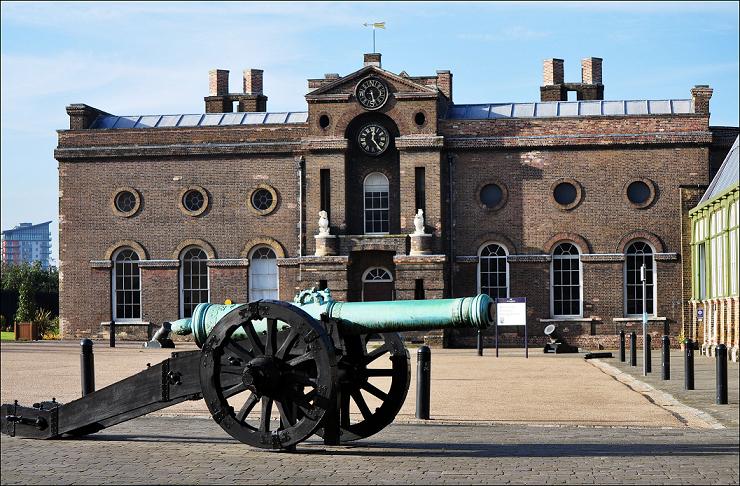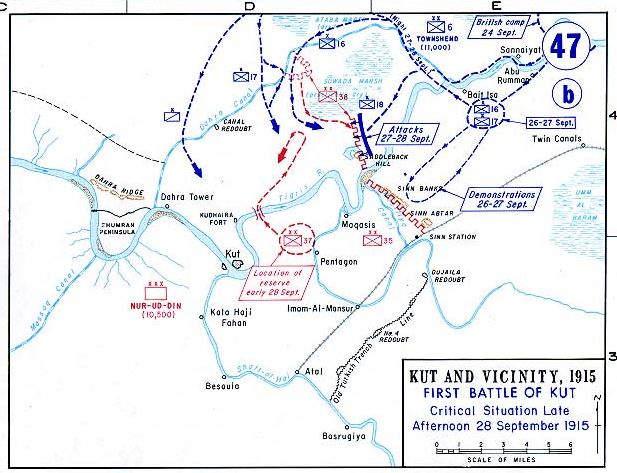|
Fenton John Aylmer
Lieutenant-General Sir Fenton John Aylmer, 13th Baronet, (5 April 1862 – 3 September 1935) was an Anglo-Irish British Army officer and a recipient of the Victoria Cross. He was in command of the first failed efforts to break the siege of Kut in 1916. From a military background, Aylmer was commissioned into the Indian Army, and immediately involved in fierce fighting on the north-west frontier. In a singularly heroic action, still in his twenties, he helped rescue Townshend's garrison at Chitral, spearheading the relief column. For his valorous conduct he was awarded the Victoria Cross, and rapid promotion through the officer class. Early career Born the son of Captain Fenton John Aylmer and Isabella Eleanor Darling. Aylmer attended the Royal Military Academy, Woolwich, as a Gentleman Cadet, in the same class as Reginald Wingate, and was promoted lieutenant on 27 July 1880. He took part in the Burma expedition between 1886 and 1887. Victoria Cross Fenton was 29 years old, an ... [...More Info...] [...Related Items...] OR: [Wikipedia] [Google] [Baidu] |
Hastings
Hastings ( ) is a seaside town and Borough status in the United Kingdom, borough in East Sussex on the south coast of England, east of Lewes and south east of London. The town gives its name to the Battle of Hastings, which took place to the north-west at Senlac Hill in 1066. It later became one of the medieval Cinque Ports. In the 19th century, it was a popular seaside resort, as the railway allowed tourists and visitors to reach the town. Hastings remains a popular seaside resort and is also a fishing port, with the UK's largest beach-based fishing fleet. The town's estimated population was 91,100 in 2021. History Early history The first mention of Hastings is from the late 8th century in the form ''Hastingas''. This is derived from the Old English tribal name ''Hæstingas'', meaning 'the constituency (followers) of Hæsta'. Symeon of Durham records the victory of Offa in 771 over the ''Hestingorum gens'', that is, "the people of the Hastings tribe." Hastingleigh in Kent ... [...More Info...] [...Related Items...] OR: [Wikipedia] [Google] [Baidu] |
Victoria Cross
The Victoria Cross (VC) is the highest and most prestigious decoration of the Orders, decorations, and medals of the United Kingdom, British decorations system. It is awarded for valour "in the presence of the enemy" to members of the British Armed Forces and may be awarded posthumously. It was previously awarded to service personnel in the broader British Empire (later Commonwealth of Nations), with most successor independent nations now having established their own honours systems and no longer recommending British honours. It may be awarded to a person of any military rank in any service and to civilians under military command. No civilian has received the award since 1879. Since the first awards were presented by Queen Victoria in 1857, two thirds of all awards have been personally presented by the Monarchy of the United Kingdom, British monarch. The investitures are usually held at Buckingham Palace. The VC was introduced on 29 January 1856 by Queen Victoria to honour acts ... [...More Info...] [...Related Items...] OR: [Wikipedia] [Google] [Baidu] |
Nilt Fort
Nilt is a town in nagar District, Gilgit–Baltistan, Pakistan Pakistan, officially the Islamic Republic of Pakistan, is a country in South Asia. It is the List of countries and dependencies by population, fifth-most populous country, with a population of over 241.5 million, having the Islam by country# .... It is located at 36°15'0N 74°25'0E with an elevation of 2260 metres (7417 feet). This area was conquered by the British in 1891 as part of the Hunza-Nagar Campaign. References External links * Populated places in Gilgit District {{GilgitBaltistan-geo-stub ... [...More Info...] [...Related Items...] OR: [Wikipedia] [Google] [Baidu] |
British Indian Army
The Indian Army was the force of British Raj, British India, until Indian Independence Act 1947, national independence in 1947. Formed in 1895 by uniting the three Presidency armies, it was responsible for the defence of both British India and the princely states, which could also have their own Imperial Service Troops, armies. As stated in the ''Imperial Gazetteer of India'', the "British Government has undertaken to protect the dominions of the Native princes from invasion and even from rebellion within: its army is organized for the defence not merely of British India, but of all possessions under the suzerainty of the Emperor of India, King-Emperor." The Indian Army was a vital part of the British Empire's military forces, especially in World War I and World War II. The Indian Presidencies and provinces of British India, Presidency armies were originally under East India Company command, and comprised the Bengal Army, Madras Army, and Bombay Army. After the Indian Rebellion ... [...More Info...] [...Related Items...] OR: [Wikipedia] [Google] [Baidu] |
Bengal Sappers & Miners
The Bengal Engineer Group (BEG) (informally the Bengal Sappers or Bengal Engineers) is a military engineering regiment in the Corps of Engineers of the Indian Army. The unit was originally part of the Bengal Army of the East India Company's Bengal Presidency, and subsequently part of the British Indian Army during the British Raj. The Bengal Sappers are stationed at Roorkee Cantonment in Roorkee, Uttarakhand. The Bengal Sappers are one of the few remaining regiments of the erstwhile Bengal Presidency Army and survived the Rebellion of 1857 due to their "sterling work" in the recapture by the East India Company of Delhi and other operations in 1857–58. The troops of the Bengal Sappers have been a familiar sight for over 200 years in the battlefields of British India with their never-say-die attitude of ''Chak De'' and brandishing their favourite tool the ''hamber''. [...More Info...] [...Related Items...] OR: [Wikipedia] [Google] [Baidu] |
Captain (British Army And Royal Marines)
Captain (Capt) is a junior officer rank of the British Army and Royal Marines and in both services it ranks above Lieutenant (British Army and Royal Marines), lieutenant and below Major (United Kingdom), major with a NATO ranking code of OF-2. The rank is equivalent to a Lieutenant (British Army and Royal Marines), lieutenant in the Royal Navy and to a flight lieutenant in the Royal Air Force. The rank of Captain (Royal Navy), captain in the Royal Navy is considerably more senior (equivalent to the Army/RM rank of colonel) and the two ranks should not be confused. In the 21st-century British Army, captains are often appointed to be second-in-command (2IC) of a Company (military unit), company or equivalent sized unit of up to 120 soldiers. History A rank of second captain existed in the Ordnance at the time of the Battle of Waterloo. From 1 April 1918 to 31 July 1919, the Royal Air Force maintained the junior officer rank of captain. RAF captains had a rank insignia based on ... [...More Info...] [...Related Items...] OR: [Wikipedia] [Google] [Baidu] |
Lieutenant
A lieutenant ( , ; abbreviated Lt., Lt, LT, Lieut and similar) is a Junior officer, junior commissioned officer rank in the armed forces of many nations, as well as fire services, emergency medical services, Security agency, security services and police forces. The rank in armies and air forces is often subdivided into subcategories of seniority. In Comparative navy officer ranks of Anglophone countries, English-speaking navies, lieutenants are often equivalent to the army rank of Captain (armed forces), captain; in other navies, the lieutenants are usually equal to their army counterparts. ''Lieutenant'' may also appear as part of a title used in various other organisations with a codified command structure. It often designates someone who is "second-in-command", and as such, may precede the name of the rank directly above it. For example, a "lieutenant master" is likely to be second-in-command to the "master" in an organisation using both ranks. Political uses include lieu ... [...More Info...] [...Related Items...] OR: [Wikipedia] [Google] [Baidu] |
Reginald Wingate
General Sir Francis Reginald Wingate, 1st Baronet (25 June 1861 – 29 January 1953) was a British Army officer and colonial administrator in Egypt and the Sudan. He served as Governor-General of the Sudan (1899–1916) and High Commissioner in Egypt (1917–1919). His central role in the administration of the Sudan earned him the nickname “Wingate of the Sudan.” Early life Wingate was born at Port Glasgow, Renfrewshire (now Inverclyde), the seventh son of Andrew Wingate, a textile merchant of Glasgow, and Elizabeth, daughter of Richard Turner who was a wealthy Irish iron founder and manufacturer of glasshouses, born in Dublin. Wingate’s father died when he was a year old, and the family, in straitened circumstances, moved to Jersey, where he was educated at St James's Collegiate School.Biography, ''Dictionary of National Biography'' Military career He entered the Royal Military Academy, Woolwich, and was commissioned a lieutenant in the Royal Artillery on 27 July 1880. H ... [...More Info...] [...Related Items...] OR: [Wikipedia] [Google] [Baidu] |
Royal Military Academy, Woolwich
The Royal Military Academy (RMA) at Woolwich, in south-east London, was a British Army military academy for the training of Officer (armed forces), commissioned officers of the Royal Artillery and Royal Engineers. It later also trained officers of the Royal Corps of Signals and other technical corps. RMA Woolwich was commonly known as "The Shop" because its first building was a converted workshop of the Royal Arsenal, Woolwich Arsenal. History Origins in the Royal Arsenal An attempt had been made by the Board of Ordnance in 1720 to set up an academy within its Arsenal (then known as the Warren) to provide training and education for prospective officers of its new Royal Regiment of Artillery, Regiment of Artillery and Corps of Royal Engineers, Corps of Engineers (both of which had been established there in 1716). A new building was being constructed in readiness for the Academy and funds had been secured, seemingly, through investment in the South Sea Company; but the latter's col ... [...More Info...] [...Related Items...] OR: [Wikipedia] [Google] [Baidu] |
Isabella Eleanor Aylmer
Isabella Eleanor Darling Aylmer (1840 – 27 December 1908) was a British novelist and poet who published under the names I. D. Fenton and Isabella D. Fenton. Isabella Eleanor Darling was born in 1840 in Bellshill, Northumberland, the daughter of George Darling. In 1857, she married Captain Fenton John Aylmer, son of Sir Arthur Percy Aylmer, 11th Baronet and a Crimean War veteran. They had four children, including future Victoria Cross recipient Sir Fenton Aylmer, 13th Baronet, before he died in 1862.Mosley, Charles, editor. ''Burke's Peerage, Baronetage & Knightage, 107th edition, 3 volumes''. Wilmington, Delaware, U.S.A.: Burke's Peerage (Genealogical Books) Ltd, 2003. volume 1, page 202 Her novel ''Adventures of Mrs. Colonel Somerset in Caffraria, During the War'' (1858) is about a woman, Helen Somerset, who is shipwrecked off southern Africa and is held captive by the Xhosa, but later chooses to remain with them. The novel is sympathetic to the Xhosa and critical of col ... [...More Info...] [...Related Items...] OR: [Wikipedia] [Google] [Baidu] |
Chitral
Chitral () is a city situated on the Kunar River, Chitral River in northern area of Khyber Pakhtunkhwa province of Pakistan. It serves as the capital of the Lower Chitral District, and was previously the capital of Chitral District, and before that the capital of Chitral (princely state), Chitral princely state. The region was encompassed into West Pakistan between the years 1969 and 1972. It has a population of 49,780 per the 2017 census. History Nothing definitive is recorded about the town's first settlers. In the 3rd century AD, Kanishka, the ruler of the Kushan Empire, occupied Chitral. In the 4th century AD, the Chinese overran the valley. Raees rule over Chitral began in 1320 and came to an end in the 15th century. From 1571 onwards Chitral was the capital of the princely state of Chitral under the rule of the Katur Dynasty. Ancient era file:Singoor.png, left, Gankoreneotek Grave in Singoor. The existence of the Gandhara grave culture, Gandharan Grave Culture in C ... [...More Info...] [...Related Items...] OR: [Wikipedia] [Google] [Baidu] |
Siege Of Kut
The siege of Kut Al Amara (7 December 1915 – 29 April 1916), also known as the first battle of Kut, was the besieging of an 8,000-strong British Army garrison in the town of Kut, south of Baghdad, by the Ottoman Army (1861–1922), Ottoman Army. In 1915, its population was around 6,500. Following the surrender of the garrison on 29 April 1916, the survivors of the siege were marched to imprisonment at Aleppo, during which many died. Historian Christopher Catherwood has called the siege "the worst defeat of the Allies (World War I), Allies in World War I". Ten months later, the British Indian Army, consisting almost entirely of newly recruited troops from Western India, conquered Kut, Baghdad and other regions in between in the Fall of Baghdad (1917), fall of Baghdad. Prelude The 6th (Poona) Division of the British Indian Army, Indian Army, under Major-General Charles Vere Ferrers Townshend, Charles Townshend, had fallen back to the town of Kut after retreating from Battle of ... [...More Info...] [...Related Items...] OR: [Wikipedia] [Google] [Baidu] |






